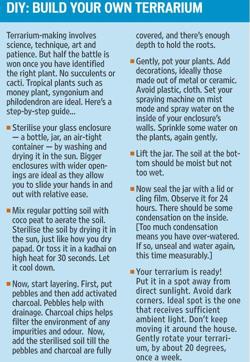Gardens enclosed in glass: Here’s how you can make your own terrarium
Create a miniature garden inside your home, in a glass jar or bowl, decorated with tiny trinkets like bicycle replicas.
When it comes to suiting up your space, few décor pieces can beat the uniqueness of a terrarium. It’s green, pretty, low-maintenance and draws attention. Besides, what’s not to love about a bunch of plants growing inside a sealed, decorative glass enclosure that need almost zero watering?
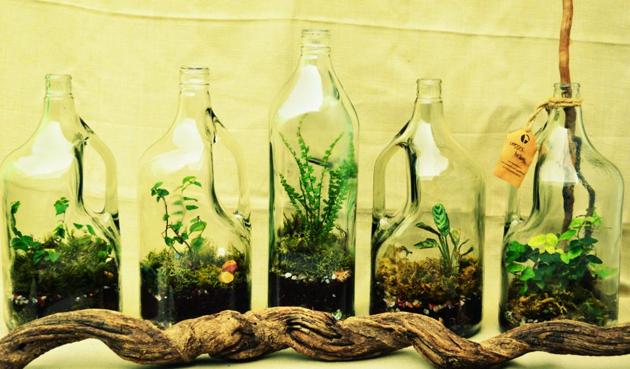
Picture philodendrons, money plants and syngoniums, in fish bowls, goblets and mason jars, perched atop a layer of pebbles and soil, and embellished by tidbits and trinkets — a miniature bicycle, a ceramic figurine, or that key chain or magnet you bought on your last vacation.
At a time when ‘Green’ is in, from what we eat and wear to what we display in our homes, terrariums are finding takers; their popularity further propelled by ‘filtered’ images on Instagram and Pinterest, and DIY videos on Facebook and YouTube.
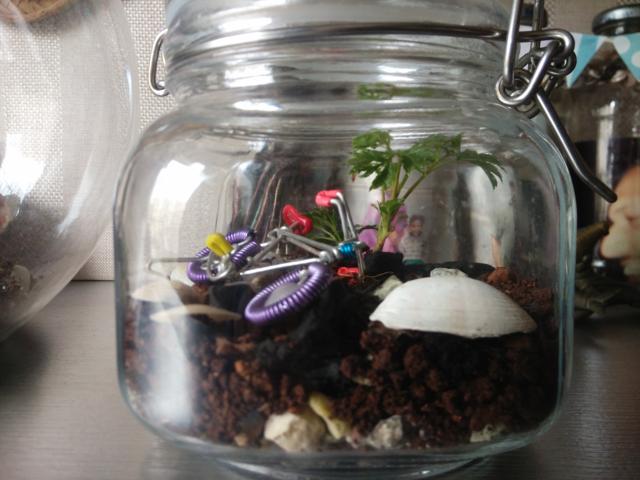
“Images on social media, however, can sometimes be misleading,” warns Anusha Babbar, 36, a horticulturist and proprietor of Under The Tree, a Mumbai-based landscape design consultancy firm. “Cacti in open glass bowls are not terrariums. These are desert plants that grow in arid regions. Tropical, lush and leafy plants such as fittonia, money plant and ferns are what best complement the humid environment inside a terrarium.”
A terrarium, then, is a sealed eco-system that needs almost zero watering except once while building it, says Babbar, who occasionally conducts terrarium workshops and sells customised pieces starting at Rs 1,200.
“It’s an artefact that connects you to mother earth sitting in your high-rise apartment,” says architect Kavita Sarathy “As any natural eco-system, a terrarium too takes its own course. So it won’t look perfect at all times, and that’s what sets it apart and draws attention.”
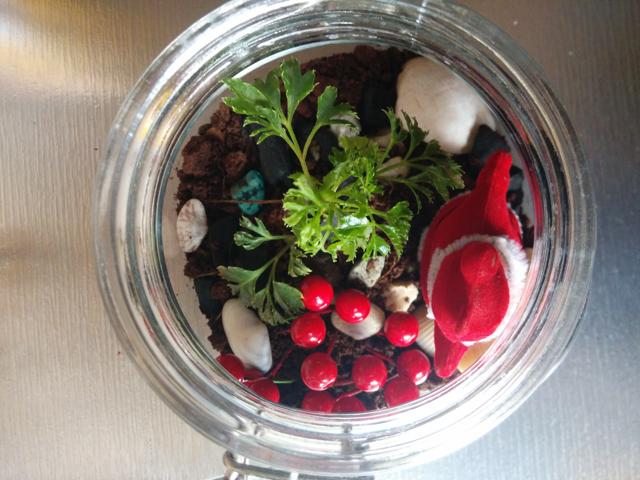
Put it on a mantle near a window alongside indoor plants in mismatched vases of different sizes or surround it with pebblefilled bowls, Sarathy advises.
For Powai resident Mahithi Pillay, who attended one of Babbar’s workshops, the origin of terrariums in itself is quite intriguing. “It’s fascinating to think that it all started in the Victorian Era, when transportation of tropical plants began in glass enclosures to shield them from the salty sea air across long sea voyages,” says Pillai, 28, a freelance writer. “Over the years they have evolved, and today there is something so fulfilling about seeing an eco-systems thrive on my work desk across my bedroom.”
GIFTING DELIGHT
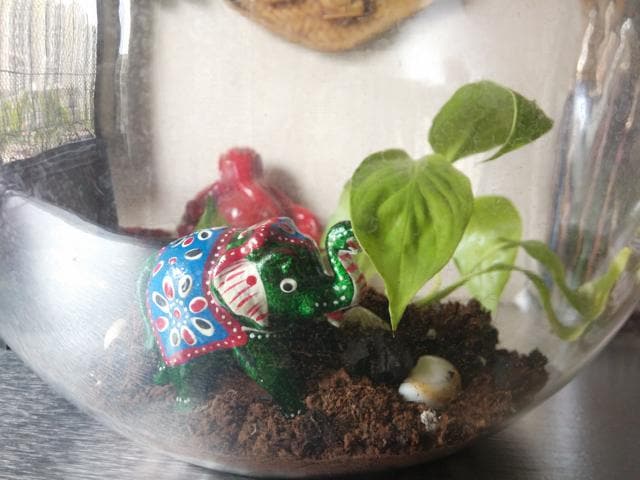
In comparison to Pillai, who has also given out a few terrariums as gifts, her friend Jyotsna N is a novice. “Of the five species I planted, only two survived,” says Jyotsna, a freelance editor who lives in a 2-BHK Chembur apartment. “I had first placed it beside a window facing the West where it probably got too much direct sunlight that ended up killing some species. After moving my terrarium to a window facing the East, it’s doing much better.”
Exposure to the right amount of natural or ambient light is of key importance, adds Dr Abhijeet Varpe, a dentist who founded Copper Brains, an online company that sells customised terrariums among other greens, in 2011, to harness his passion for gardening.
Read: Internet of homes: Realty sites level playing field for smaller players
“If you can’t sit in a sunny spot for too long then neither can your terrarium,” says Varpe. “But don’t dump it in a dark corner either, just because it looks pretty in that spot.”
“I start my workshops with a standard warning, ‘unless your dining table is by your window, drop the idea of displaying your terrarium as a centerpiece’,” adds Babbar.
HANDLE WITH CARE
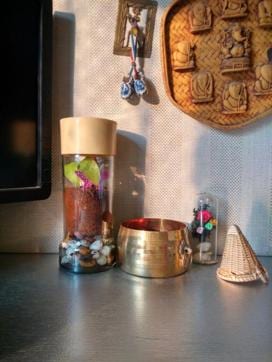
For novices, Varpe says he can observe and adapt the terrarium for a couple of days before handing it over, with a list of dos and don’ts. Morning and evening sunlight, or diffused artificial light for at least 10 to 12 hours a day, is healthy. Harsh afternoon light is a big no.
Read: Want a piece of the realty pie? You might want to consider a nano home
Pillai, knows this; her most recent attempt being a terrarium inside a Davidoff coffee bottle that she built using tweezers. “The wider the mouth, the easier it is to maneuver your hands, but this time I have challenged myself with a narrower opening,” says Pillai. “Let’s see how it grows.”
“Whether it’s the side-table in your bedroom or a shelf near your living room window, a terrarium can be a unique aesthetic addition,” says Varpe. “It’s nothing less than a piece of art.”
